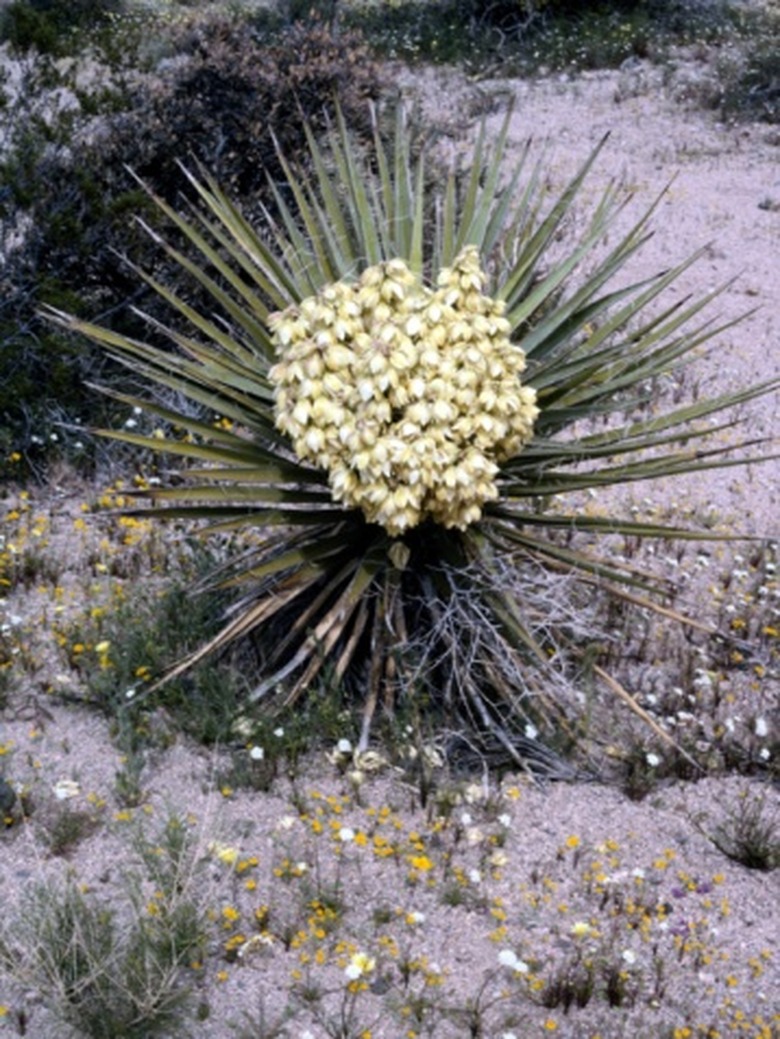Yucca Plant Facts
The yucca plant is a perennial evergreen shrub native to arid regions of North America. According to the Utah State University Cooperative Extension website, it is deep-rooted and long-lived, with some plants surviving hundreds of years.
Identification
Yucca has leathery, sword-shaped, spikey leaves and grows as high as 15 feet tall, depending on the species. Its foliage can be green to pale blue, and some leaves are striped in shades of white, yellow and cream. Yucca produces upright clusters of white, bell-shaped flowers.
Types
There are more than 20 species of yucca, according to the University of Florida IFAS Extension. Some commonly grown species include Spanish bayonet (Y.aloifolia), Adam's needle (Y. filamentosa), and curve-leaf yucca (Y. recurvifolia).
- The yucca plant is a perennial evergreen shrub native to arid regions of North America.
- According to the Utah State University Cooperative Extension website, it is deep-rooted and long-lived, with some plants surviving hundreds of years.
Function
Historically, Native American Indians used all parts of the yucca plant. Its roots were made into soap and its leaf fibers were used for cords and sandals. The stalks, buds and flowers of some varieties were used as food.
Requirements
Yucca plants require full sun and sandy, well-drained soil. They are drought-resistant plants, needing additional water only until they are established. Fertilizing is generally not necessary, although young plants can be fed to encourage initial growth with a half-strength solution of a well-balanced fertilizer.
Water A Yucca Plant
Use a hose or watering can to water near the base of a yucca rather than from overhead. The less the foliage is exposed to water, the less likely that it'll have fungal problems. If you must water a yucca from overhead, water in the morning so that the foliage dries out before night.
- Historically, Native American Indians used all parts of the yucca plant.
- Use a hose or watering can to water near the base of a yucca rather than from overhead.
